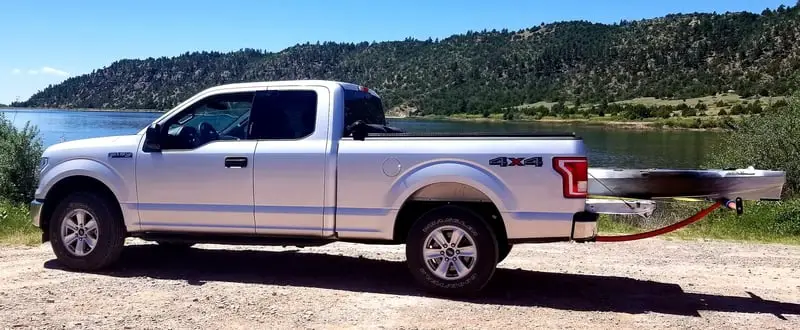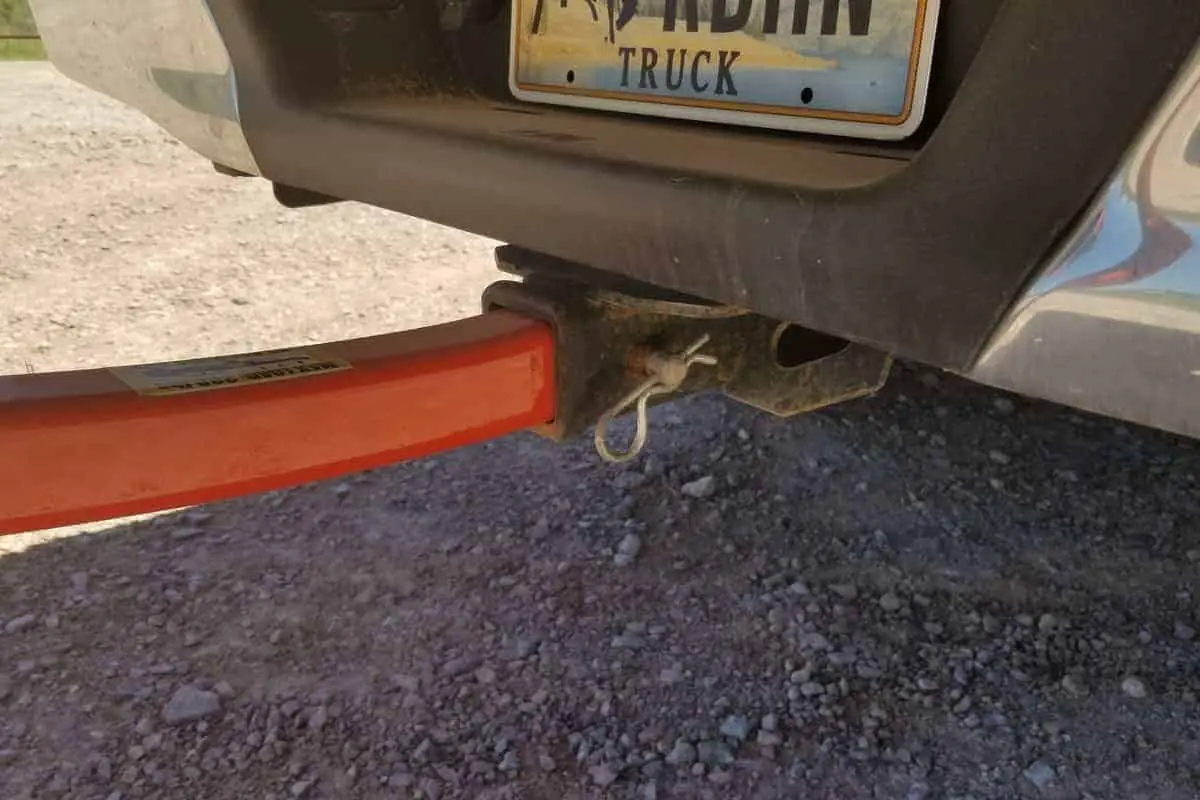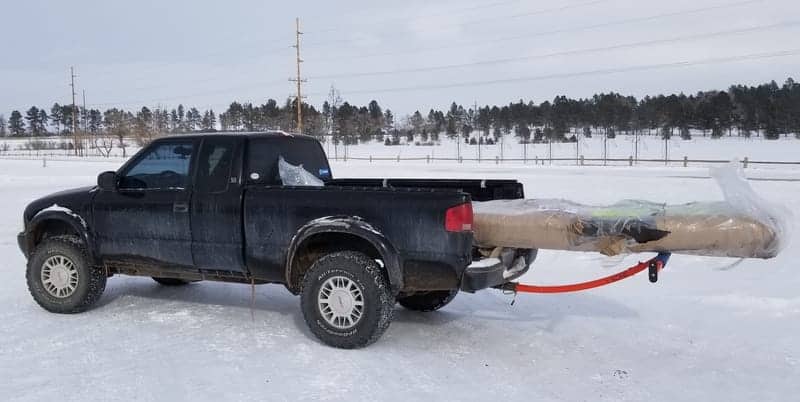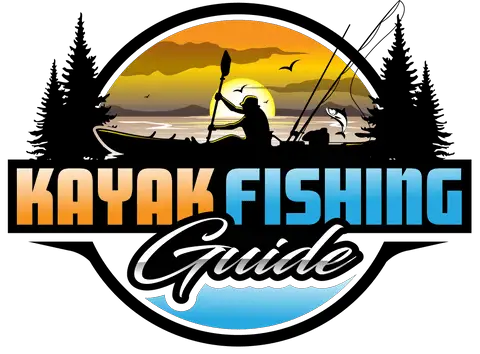Transporting your kayak to the water has always been an adventure for many. You’ll often see various methods being used as you drive along the highway, some of which may damage the kayak. There are better ways to haul your kayak!
The length of the kayak will determine the best way to haul it to the water. And your kayak may be an expensive investment you want to protect! So please, don’t throw it around!
You can transport your kayak in the truck bed using cam lock tie-downs and foam blocks. Kayaks 10′ to 12′ long can be transported with the tailgate down for added support, and kayaks 12′ and longer can be easily transported with a bed extender. Always place a red flag on the end of the kayak for safety.
Not only does the kayak’s length play a large part in how you transport your kayak, but the type and size of pickup truck you drive also does as well! Allow me to share my preferred method of transporting my own Wilderness Systems ATAK 120!
Truck Bed Extender for Pickup
If your kayak is 12′ or longer, there are good reasons to choose, or eventually choose, a truck bed extender. I researched several bed extenders and chose one built and designed with paddlers in mind.
Boonedox T-Bone Bed Extender
The Boonedox T-Bone Bed Extender is a great solution for kayak anglers needing extra support to haul their kayaks in a truck bed. It easily extends the length of your truck bed, providing a secure platform to carry your kayak. Its lightweight yet durable design ensures easy installation and sturdy transport.
The latest Boonedox bed extender has recently been upgraded with several great features compared to the one I purchased a few years ago. They have placed gear tracks on it so you can mount several accessories when fishing or hauling your kayak!
The reasons I chose a bed extender over allowing the kayak to hang out the back of the bed were as follows:
Support

Currently, I fish from a Wilderness Systems ATAK 120. From the image above of my truck and kayak, you can plainly see how much of the kayak hangs over the tailgate!
If you’re traveling with a kayak that is 16′ long or even 14′ long, there will be quite a bit of overhang. Having solid support for a longer kayak is critical if you’ll be traveling a long distance.
With the weight of the kayak and any gear you may have riding inside of it, the plastic hull could deform or even crack at a stress point.

The T-Bone Extender sites tightly on your receiver hitch and can be locked with a locking receiver pin or pulled out and stored inside of your truck for safekeeping while you’re on the water!
Safety
With the additional support of a bed extender, a higher degree of safety comes while traveling with a longer kayak. The angles of your tie-downs aren’t as severe, allowing you better securement.
Convenience
Most truck bed extenders are easily stored along a wall or even hung up out of your way in the garage when you are not using them. They also store out of sight in the bed of your truck if you have a truck cap or tonneau cover on!
Ease of Use
Installing a bed extender into a receiver hitch is super simple, quick, and easy! It also makes loading the kayak into the bed of the truck a breeze!
The bed extender is the simplest, safest, and most secure way to transport my ATAK 120 to my fishing and kayaking destination.
Transporting a 10′-12′ Kayak in a Truck
You’ll find most kayaks ranging from 10′ to 12′ in length can be hauled in the back of a pickup with the tailgate down for added support.
Smaller kayaks have less overhang, hence less unsupported weight, and are less prone to hull deformation and/or stress cracks.
Use a strong, high-quality padded cam lock for your tie-downs as you don’t want your kayak sliding out the back of the truck as you pull away from a stoplight!
You can use the corners of your bed box to anchor your tie-downs and run them to the kayak portion hanging over the tailgate. Do not over-tighten the straps.
As you pull the tie-downs tighter to secure your kayak, they will force the bow into the truck bed behind the cab. Place pool noodles beneath or alongside the kayak to keep it from sliding around and support the keel off the truck bed!
Hauling Kayaks in a Short Bed Truck
Short bed trucks leave us little options since there is limited room to work with.
The best way to haul a kayak in a short bed truck is to leave the tailgate down for added support and secure the kayak with at least two tie-down straps. Always place a red flag, cloth or plastic, at the end of the kayak for safety reasons. If traveling a short distance, prop it up on the tailgate.
When my Wilderness Systems ATAK 120 was shipped to Wyoming during the winter, I owned a little GMC Sonoma pickup. The Boonedox T-Bone Bed Extender was the ticket to getting the 12′ kayak from the shipper to the house!
I received many stares from other drivers as I drove home with a kayak in the middle of the winter!

Transporting Kayaks With Tailgate Up or Down
It is always best to transport your kayak with the tailgate down if at all possible. Having the tailgate down provides additional support beneath the kayak.
We’ve all seen those little trucks hauling one or two kayaks with them angled inside the pickup bed and hanging out over the back, haven’t we? This can damage the kayak’s hull!
Having the kayak hanging over like this can bend or dent the hull in hotter weather. Use this method only for short distances!
How Far Can a Kayak Hang Out of a Truck?
Be guided by the Code of Federal Regulations. Any load extending more than 4′ beyond the rear must have the extremities of the load marked with red or orange fluorescent warning flags. Each warning flag must be at least 457 mm (18 inches) square.
Depending upon your specific kayak and the truck you drive, most kayaks will stick out anywhere from 2′ to over 4′ beyond the rear bumper of your truck.
It is considered ‘good practice’ to always place a red or orange flag on the rear of your kayak, not only for safety reasons but also to protect your expensive gear!
How To Haul Three or Four Kayaks in a Truck
When heading out kayak fishing with friends, the problem always arises of hauling three to four kayaks at once!
One pretty easy way is to stack the kayaks on top of one another in the pickup bed, making certain you strap them down securely.
I always try to stack them with the tailgate down for additional support. Sometimes, you can stack them together on one side across the bed of the pickup truck, too!
If the kayaks are smaller and 10′ long or shorter, you can haul them with the tailgate up, but I recommend leaving the tailgate down when traveling a long distance.
Although this is my preferred method of going out with multiple kayaks! If practical, try to take two vehicles if you’ll be fishing a flowing waterway like a river or stream or would like to put in at one spot and take out at another!
This way, you’ll have a pickup vehicle at the take-out spot to return to the starting point.
Should a Kayak Be Transported Upside Down?
Generally speaking, plastic rotomolded fishing kayaks can be transported hull down in the pickup bed without sustaining any damages or deformities.
I often find removing and installing the accessories mounted onto my gear tracks annoying when heading to the lake. So I haul my kayak hull down on the bed extender, leaving my accessories attached, without any issues.
In the end, I hauled my kayak a couple of different ways to the fishing grounds. The bed extender was the easiest for me and supported the weight of the kayak.
When I’m heading to the city lake or somewhere relatively close, I slide the ATAK 120 into the bed, strap it down securely, place a red flag on the end, and drive a few miles to the water.
Whichever way you choose to transport your kayak and gear to the water by yourself or with friends, do it safely!
Related Articles
Have fun, and be safe out there!

